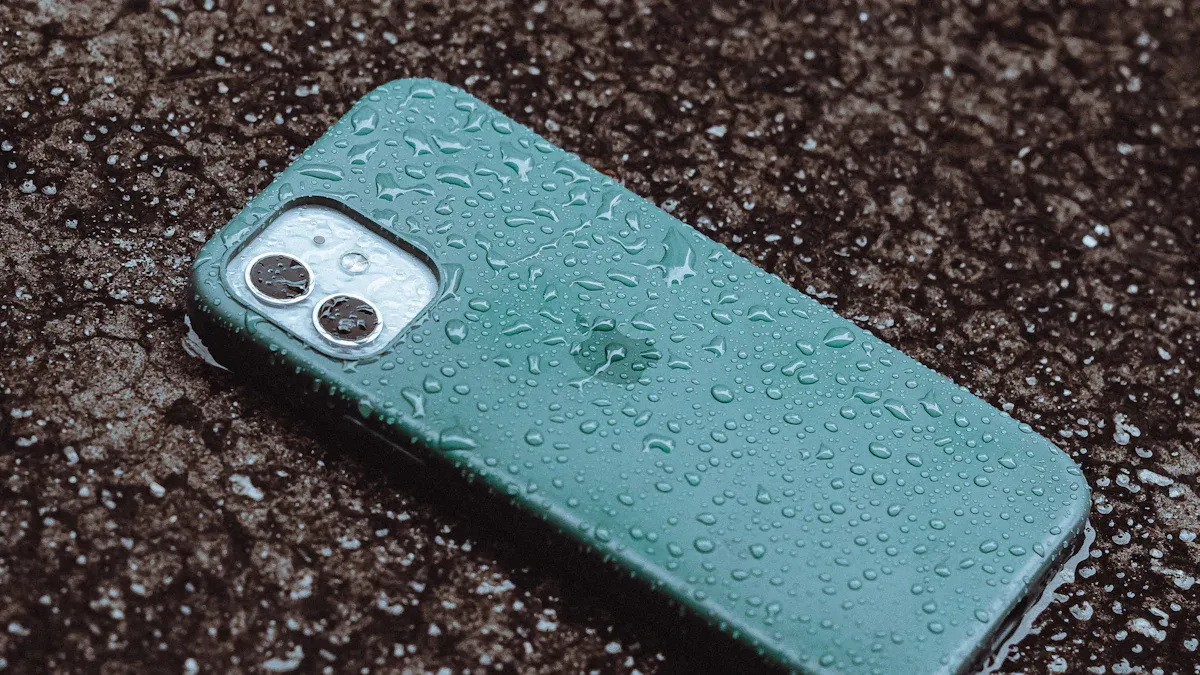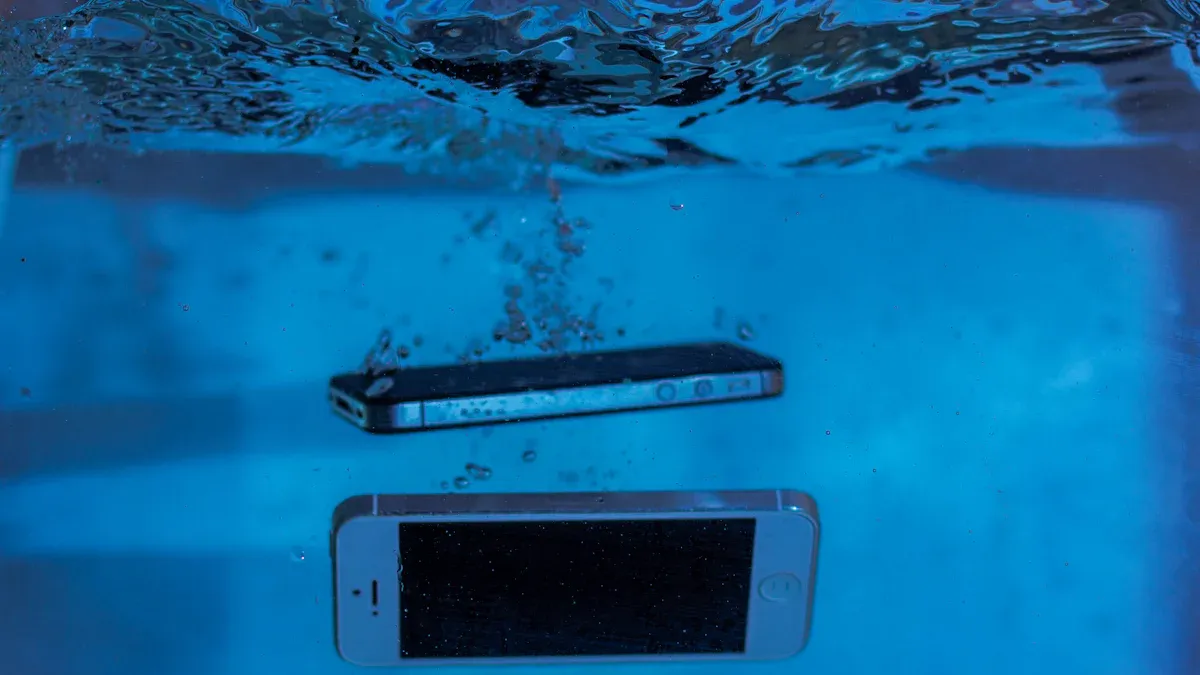
Imagine being caught in a downpour while hiking or working outdoors. You pull out your phone, and it’s completely useless because it’s not built for harsh conditions. That’s where a rainproof weatherproof telephone comes in. These phones, like an IP67 방수 전화, are designed to handle rain, dust, and even extreme temperatures. Whether you’re hiking, camping, or working on an offshore weatherproof telephone system, having the right device ensures you stay connected without worrying about damage.
Key Takeaways
- Look at the IP rating before buying a waterproof phone. Pick IP67 or higher for better water protection.
- Think about your outdoor activities when picking features. Choose a phone that fits what you need.
- Take care of your phone by cleaning it often. Use covers to protect it and make it last longer.
Key Features of a Rainproof Weatherproof Telephone

Understanding IP Ratings (IP67, IP68)
When shopping for a rainproof weatherproof telephone, you’ll often see terms like IP67 or IP68. But what do they mean? These are Ingress Protection (IP) ratings, which tell you how well a device resists water and dust. For example, a phone with an IP67 rating can survive being submerged in water up to 1 meter deep for 30 minutes. On the other hand, IP68 offers even better protection, allowing the phone to handle deeper water or longer exposure. If you plan to use your phone in heavy rain or near water, aim for at least an IP67 rating.
팁: Always double-check the IP rating before buying. It’s your best indicator of how well the phone can handle wet conditions.
Waterproof Materials and Build Quality
The materials used in a rainproof weatherproof telephone play a huge role in its durability. Look for phones made with reinforced plastics, rubberized edges, or even metal frames. These materials not only keep water out but also protect against accidental drops. Sealed ports and buttons are another sign of good build quality. They prevent water from sneaking into the phone’s internal components.
Durability and Ruggedness for Outdoor Conditions
Outdoor conditions can be unpredictable. That’s why you need a phone that can handle more than just water. A rugged design ensures the phone can survive drops, shocks, and even extreme temperatures. Some phones are tested to military standards, like MIL-STD-810G, which means they’ve been through rigorous durability tests. Whether you’re hiking rocky trails or working on a construction site, a rugged phone is your best bet.
Battery Life and Power Efficiency
When you’re outdoors, access to a charger might be limited. That’s why battery life is crucial. A good rainproof weatherproof telephone should last at least a full day on a single charge. Some models even offer power-saving modes or larger batteries to keep you connected longer. If you’re planning extended trips, consider a phone with fast-charging capabilities or compatibility with portable chargers.
Display Quality and Outdoor Visibility
Have you ever tried to read your phone screen under bright sunlight? It’s frustrating, right? A high-quality display with good outdoor visibility solves this problem. Look for phones with bright screens and anti-glare coatings. Some models even have adaptive brightness settings that adjust automatically based on the lighting conditions. This feature ensures you can easily read maps, messages, or notifications, no matter where you are.
Additional Features for Outdoor Use (e.g., GPS, noise-canceling, MIL-STD-810G certification)
A rainproof weatherproof telephone often comes with extra features designed for outdoor enthusiasts. Built-in GPS is a must-have for navigation during hikes or camping trips. Noise-canceling microphones make it easier to communicate in windy or noisy environments. Some phones also include barometers, altimeters, or even thermal imaging cameras. If you’re serious about outdoor adventures, these features can make a big difference.
참고 : Not all phones offer the same extras. Make a list of the features you’ll actually use to avoid paying for things you don’t need.
How to Assess Your Needs
Choosing the right rainproof weatherproof telephone starts with understanding your specific needs. Not all outdoor activities or environments require the same features, so taking the time to evaluate your situation can save you money and frustration. Let’s break it down step by step.
Matching Features to Outdoor Activities
Think about how you’ll use your phone outdoors. Are you a hiker who needs GPS for navigation? Or maybe you work on a construction site where durability is key. Different activities call for different features.
- For hikers and campers: Look for a phone with a built-in GPS, long battery life, and a rugged design. These features ensure you can navigate trails and stay connected, even in remote areas.
- For construction workers: A phone with MIL-STD-810G certification and reinforced materials can handle drops, dust, and vibrations.
- For water sports enthusiasts: Prioritize a high IP rating (like IP68) and waterproof materials. This ensures your phone survives splashes or even full submersion.
팁: Make a list of your top three outdoor activities. Then, match the phone’s features to those activities to narrow down your options.
Considering Environmental Factors (e.g., rain, dust, temperature)
Your environment plays a huge role in determining the right phone. If you’re often in wet or dusty conditions, a phone with a high IP rating is non-negotiable. But there’s more to consider:
- Rainy climates: A rainproof weatherproof telephone with sealed ports and buttons is essential. This prevents water from damaging the internal components.
- Dusty areas: Phones with dustproof designs, like rubberized edges and sealed casings, are ideal for sandy beaches or construction sites.
- Extreme temperatures: Some phones are built to withstand freezing cold or scorching heat. If you’re planning to use your phone in such conditions, check the manufacturer’s specifications for temperature tolerance.
참고 : Always consider the worst-case scenario for your environment. It’s better to have a phone that’s over-prepared than one that fails when you need it most.
Evaluating Usage Scenarios (e.g., hiking, construction, camping)
How you plan to use your phone day-to-day matters just as much as the environment. Will you need it for emergencies, work, or leisure? Here’s how to think about it:
- Emergency use: If you’re heading into remote areas, prioritize battery life and signal strength. A phone with an SOS feature or satellite connectivity can be a lifesaver.
- Work-related use: For jobs that involve heavy machinery or loud environments, look for noise-canceling microphones and a durable build.
- Leisure activities: If you’re using the phone for casual outdoor fun, like camping or fishing, focus on features like a bright display and decent waterproofing.
Pro Tip: Imagine a typical day using your phone outdoors. Write down the tasks you’d need it for, like checking maps, making calls, or taking photos. This will help you identify the must-have features.
By assessing your needs based on activities, environment, and usage scenarios, you’ll be better equipped to choose a phone that fits your lifestyle. Remember, the goal is to find a device that enhances your outdoor experience without breaking the bank.
Comparing Rainproof Weatherproof Telephones

High-End Options
If you’re looking for the best of the best, high-end rainproof weatherproof telephones are packed with premium features. These phones often come with IP68 ratings, military-grade durability, and advanced extras like thermal imaging or satellite connectivity. They’re perfect for extreme outdoor enthusiasts or professionals working in harsh conditions. Brands like CAT and Samsung offer models that can survive drops, submersion, and even extreme temperatures. While these phones come with a hefty price tag, they deliver unmatched performance and reliability.
Pro Tip: High-end phones are a great investment if you frequently face tough outdoor environments.
Mid-Range Options
Mid-range options strike a balance between price and performance. These phones usually have IP67 or IP68 ratings and solid durability. They may lack some of the advanced features of high-end models but still offer excellent protection against water, dust, and drops. Brands like Ulefone and Doogee provide great mid-range choices. These phones are ideal for casual hikers, campers, or anyone who needs a reliable device without breaking the bank.
Budget-Friendly Options
On a tight budget? Don’t worry. You can still find a rainproof weatherproof telephone that gets the job done. Budget-friendly models often have IP67 ratings and basic rugged designs. They may not have all the bells and whistles, but they’re perfect for light outdoor use. Look for brands like Blackview or AGM for affordable yet durable options.
Key Differences Across Price Ranges
The main differences between price ranges come down to features and build quality. High-end phones offer advanced technology and extreme durability. Mid-range models provide a good mix of features and affordability. Budget-friendly options focus on basic protection and functionality. Choose based on your needs and how much you’re willing to spend.
Maintenance Tips for Longevity
Keeping your rainproof weatherproof telephone in top shape doesn’t have to be complicated. With a little care, you can extend its lifespan and ensure it performs well in any outdoor condition. Let’s dive into some simple maintenance tips.
Cleaning and Drying the Phone
Outdoor adventures can leave your phone covered in dirt, dust, or water. To clean it, use a soft, damp cloth to wipe the exterior. Avoid harsh chemicals or abrasive materials that could damage the surface. If your phone gets wet, dry it immediately with a microfiber cloth. Pay extra attention to ports and buttons, as water can sneak into these areas. For stubborn dirt, a small brush or compressed air can help.
팁: Never use a hairdryer or heat source to dry your phone. It can cause internal damage.
Using Protective Accessories
Even though your phone is built to handle tough conditions, adding protective accessories can give it an extra layer of safety. A rugged case can absorb shocks from accidental drops, while a screen protector prevents scratches. If you’re heading into extreme environments, consider a waterproof pouch for added peace of mind.
Avoiding Common Mistakes
Some habits can shorten your phone’s lifespan. For example, don’t charge it when it’s wet or dirty. This can damage the charging port. Also, avoid exposing your phone to direct sunlight for long periods, as it can overheat. Always follow the manufacturer’s guidelines for proper use.
Regular Software Updates and Backups
Keeping your phone’s software up to date is just as important as physical maintenance. Updates often include bug fixes and security improvements that keep your device running smoothly. Don’t forget to back up your data regularly. This ensures you won’t lose important information if something goes wrong.
Pro Tip: Set your phone to update automatically so you don’t miss critical updates.
By following these tips, you’ll get the most out of your rainproof weatherproof telephone. A little effort goes a long way in keeping your device reliable for all your outdoor adventures.
Choosing the right rainproof weatherproof telephone doesn’t have to be overwhelming. Focus on features like durability, battery life, and waterproofing that match your needs. Think about your budget and how you’ll use the phone outdoors. Investing in a reliable device ensures you stay connected and worry-free during your adventures.
제품 정보
What does IP67 or IP68 mean for waterproof phones?
These ratings show how well a phone resists water and dust. IP67 handles shallow water; IP68 survives deeper submersion.
팁: Always check the IP rating before buying.
Can I use a rainproof phone in freezing temperatures?
Yes, many rugged phones work in extreme cold. Check the manufacturer’s specs for temperature tolerance to ensure reliability.
Are budget-friendly rainproof phones worth it?
Absolutely! Budget models offer basic waterproofing and durability. They’re perfect for light outdoor use without breaking the bank.
Emoji: 💡 Pro Tip: Match features to your needs to avoid overspending.


